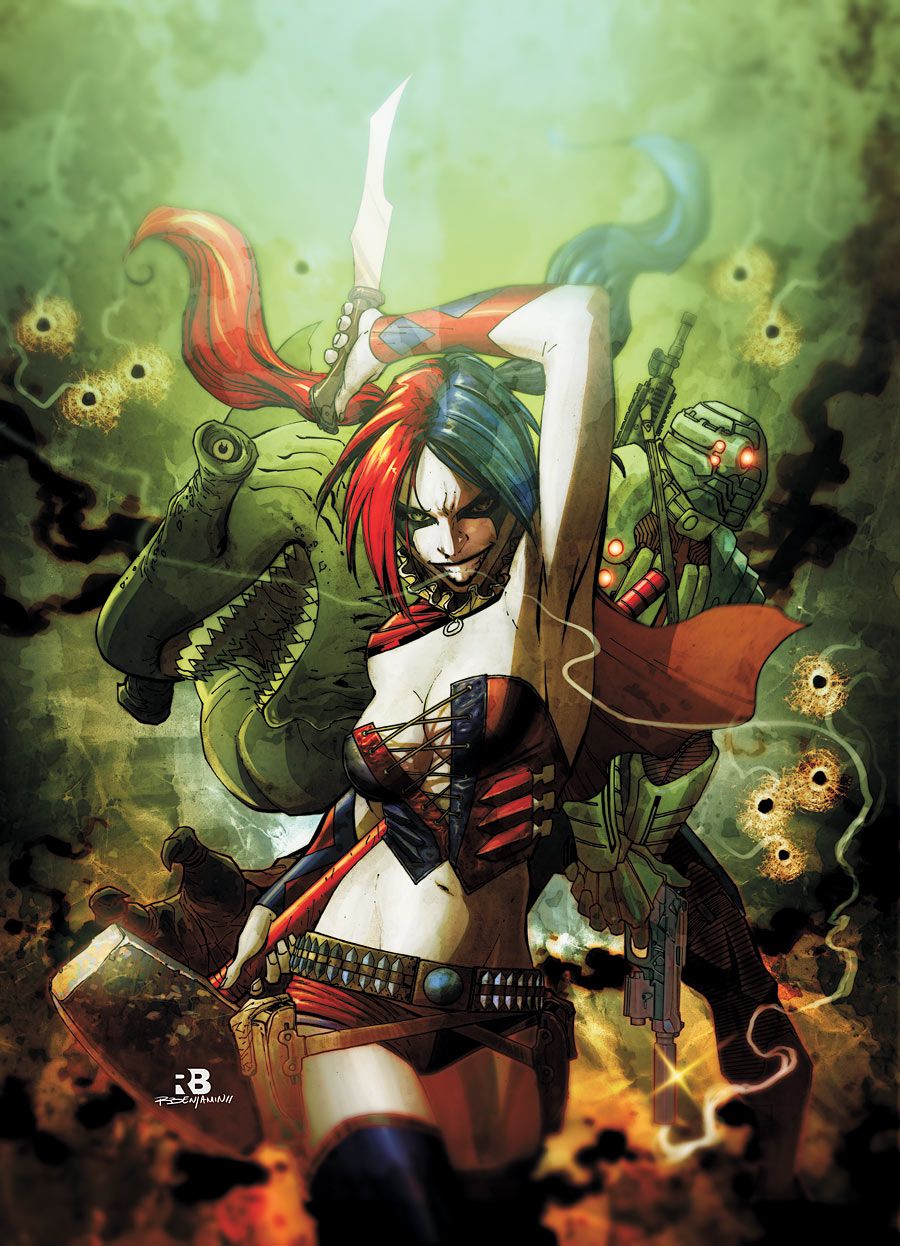I cannot claim that this book held the least interest for me out of DC's fifty-two new first issues, but in truth, this series just seemed to be a middling title, something I wasn't concerned with being good or horrible. It was a title I wasn't going to buy, but I would flip through. Except I decided to do a little more than flip. I set aside my complete lack of expectations for this title and was wonderfully surprised by the story under the Ryan Benjamin cover.
Adam Glass has a tall order in front of him with this issue. "Suicide Squad" is "every" fan's favorite book from back in the day, and this iteration seems poised to fill the seat at the DC table formerly occupied by the much-ballyhooed "Secret Six." The natural thing to do then is to put some classic characters on the roster. The relaunched version of Harley Quinn has gotten more than a little publicity for the outfit she's wearing on the cover, but the character in the story isn't too far afield from the nutjob we've all come to love. Well, maybe she's a little more nutty, but it works here. Add in Deadshot, because "Suicide Squad" simply needs Deadshot and King Shark.
King Shark steals the show for me. I'm not too keen on the decision to make him a hammerhead this time out as it gives him more of a dinosaur-like appearance, but he shines in Glass' story nonetheless. I have no doubt fanboys across the world will be laughing with me on this one.
The art for King Shark and his pals, which was solicited as being by Marco Rudy, is by an awkward trio of Federico Dallocchio, Ransom Getty, and Scott Hanna. The awkwardness doesn't stem from their ability or work, but rather from the unbalanced pairing of Dallocchio and Getty. Dallocchio's work is grizzly and rough, playing with harsh shadows in place of intricate detail, but still utilizing detail in the backgrounds and surroundings. It is not unlike J. H. Williams III's work on "Chase" from back in the 1990s. Getty, by contrast, has a style that is clean and sharp. On more than one page, I found the art to be very near to that of Chris Batista. Neither artist is ill-suited for this book, but I think each would benefit from having the opportunity to fill an issue with his own work.
Through it all, Val Staples serves as the bedrock of the book, brightening up the heavy spots with surprising bursts of color and tying Dallocchio and Getty together solidly. Staples adds to the details drawn by both artists, and his work is stunning in conjunction with the pages drawn by Dallocchio.
There are a few more surprises - and I do mean surprises - filling out the roster, not to mention the "scope" of the roster, the source behind the opening torturous scene, and the team's first assignment. Those pieces add up to a book that grabs my attention by the back of the neck and whispers to me to come back next month. Honestly, I don't see how I'm going to miss it.

